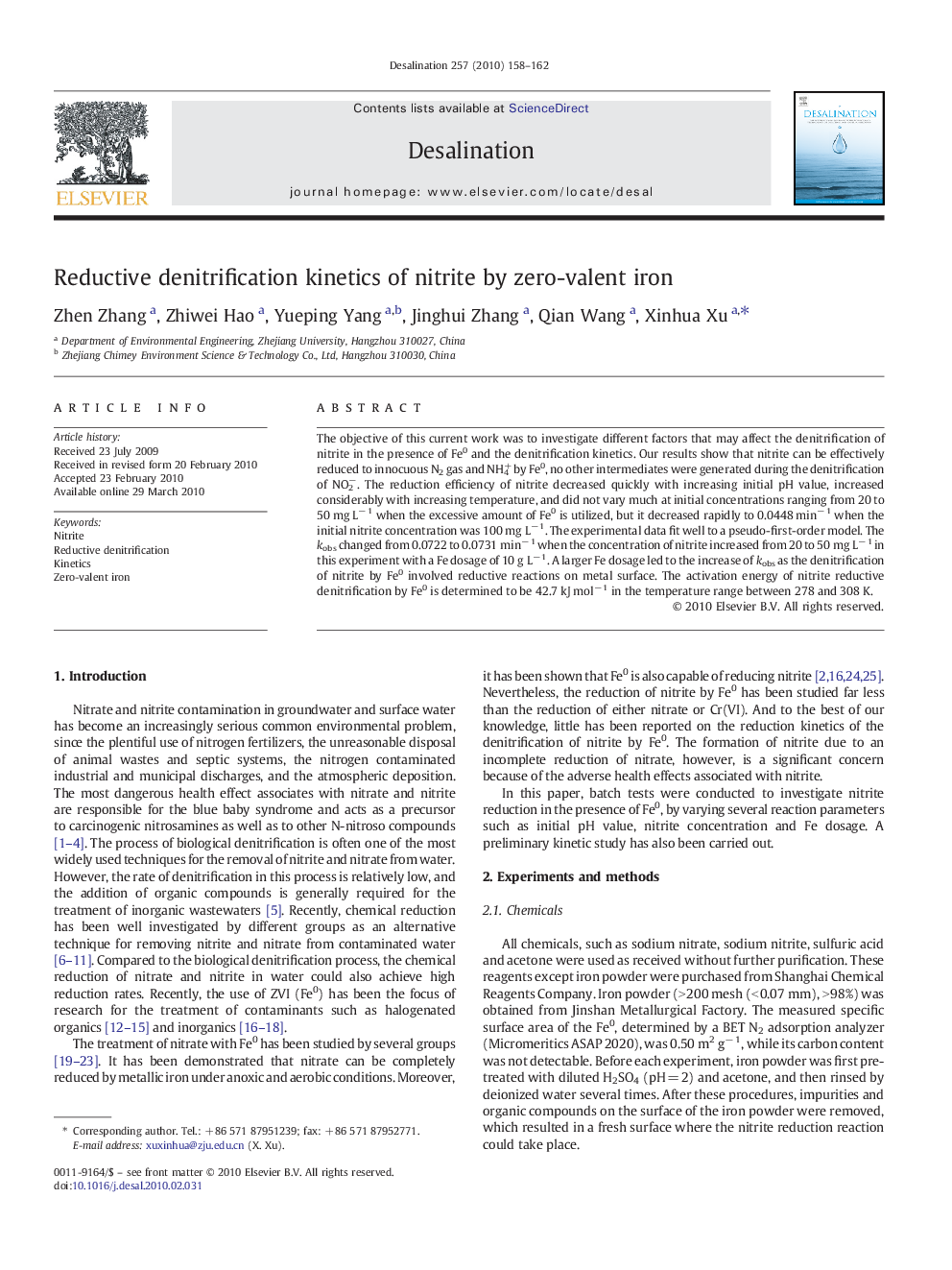| Article ID | Journal | Published Year | Pages | File Type |
|---|---|---|---|---|
| 625736 | Desalination | 2010 | 5 Pages |
The objective of this current work was to investigate different factors that may affect the denitrification of nitrite in the presence of Fe0 and the denitrification kinetics. Our results show that nitrite can be effectively reduced to innocuous N2 gas and NH4+ by Fe0, no other intermediates were generated during the denitrification of NO2−. The reduction efficiency of nitrite decreased quickly with increasing initial pH value, increased considerably with increasing temperature, and did not vary much at initial concentrations ranging from 20 to 50 mg L− 1 when the excessive amount of Fe0 is utilized, but it decreased rapidly to 0.0448 min− 1 when the initial nitrite concentration was 100 mg L− 1. The experimental data fit well to a pseudo-first-order model. The kobs changed from 0.0722 to 0.0731 min− 1 when the concentration of nitrite increased from 20 to 50 mg L− 1 in this experiment with a Fe dosage of 10 g L− 1. A larger Fe dosage led to the increase of kobs as the denitrification of nitrite by Fe0 involved reductive reactions on metal surface. The activation energy of nitrite reductive denitrification by Fe0 is determined to be 42.7 kJ mol− 1 in the temperature range between 278 and 308 K.
